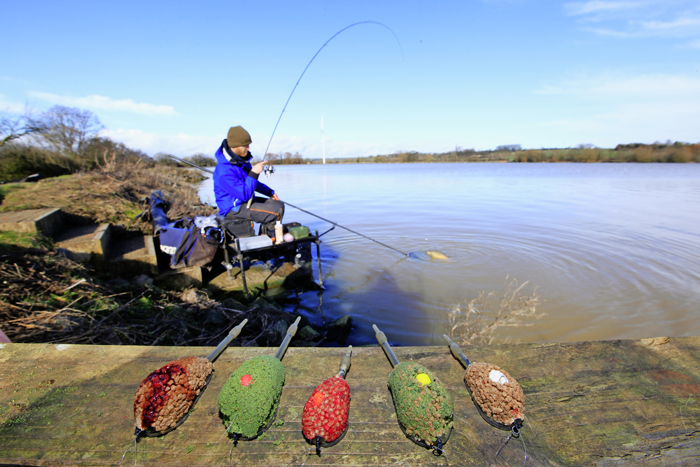Five point plan for success when fishing a day-ticket water!
It can be quite difficult at this time of the year to succeed on a day-ticket water especially when the low temperatures have hit and the sun isn't quite giving off as much heat as you'd like. Gardner’s Jack Funnell however has a few tricks up his sleeve to ensure your alarms keep screaming so make sure you follow this five point plan for day-ticket waters.
1) Actively find the fish
You can’t catch what’s not there - it’s that simple! Carp won’t move very far in cold water, so you need to go to them, rather than vice versa, otherwise you’ll just end up camping, rather than fishing.
It is rare to always get the swim you hoped for but, equally, having a rigid plan can often work against you. “All lakes have a ‘go to’ area where the fish tend to congregate in winter,” Jack explained.
“They do go up into the shallows on very rare occasions, but if the fish aren’t actively showing, don’t bother.”
Another way Jack tries to find the shoals is to lead around in any empty swims. It sounds barmy, but he reckons that if the fish shoal up tightly, you can actually feel the lead bouncing through them - provided you get the cast right.
“I’ve done this and had some big hits of fish, while the lad in the next swim has blanked,” said Jack.
2) Swap mono for fluorocarbon
It sounds banal, but one tip that Jack was keen to share was the simple act of changing your mainline from mono to fluorocarbon - it can make a huge difference to your results. Mono sinks, but not as well as a good quality fluorocarbon. Jack’s favourite is Gardner Mirage.
“Using fluoro as the mainline ensures that the last few yards of line and end tackle are pinned to the deck. This guarantees that the fish will not spook off the mainline and it’s also almost invisible in water,” Jack told us.
“It is not always the latest rig or bait that makes the difference. But something much more simple! “I mean, it’s not magic, but it might just get you that couple of bonus fish on a tough day.”
3) Flavour-filled solid bags
In cold water, the carp won’t necessarily want to move to bait. Putting out 5kg of boilies at this time of year will most probably just see you prebaiting for next spring! As the fish’s metabolism is very much reduced, you need to fish for one bite at a time, not a hit of fish.
By using solid PVA bags you can slowly build a swim, as well as packing the bags with a variety of loosefeed items to create a compact trap on the lakebed. “One edge that has worked well for me is filling the bag with pellets, a few crushed Sticky Baits Manilla boilies, corn and maggots,” said Jack.
“I always have a few pre-tied, so can I cast at showing fish. Prior to casting, I inject the bag with some liquid flavour to flood the swim with attraction but little in the way of extra food content.”
4) Adjust your zigs
Although he always fishes one of his three rods on the deck, the other two will often be on zig rigs. “The biggest problem with zigs is trying to discover the exact depth at which the fish are sitting,” advised Jack.
“If they are obviously not on or near the surface I’d look to start around three-quarters depth with one rod, and slightly shallower with the second.”
He will then shorten the hooklink every couple of hours in increments of one foot at a time, so that he eventually covers all depths. “If I still haven’t had a run, then it is time to change the colour of the hookbait, cast to another area or even move swims,” he added.
5) Use maggots sparingly
Becoming more and more popular on many day-ticket waters, maggots can be devastating in the colder months. Jack, however, uses them very differently to other anglers.
“I have found that if I’m struggling for bites using boilies or corn for example, putting out a couple of Spombs of maggots can trigger the carp into feeding,” he explained.
Experience has shown the Croydon-based rod that once you get them eating, you can go back to your original hookbaits. The movement of the maggots just seems to trigger a feeding response in the fish that other baits don’t.
“I see anglers with truckloads of maggots in buckets, literally gallons and gallons,” he said.
“The problem with this is that they are both expensive and difficult to keep. I only bring three or four pints – most of which I might take home – just to use to try to provoke a couple of bites and get the swim going.”














